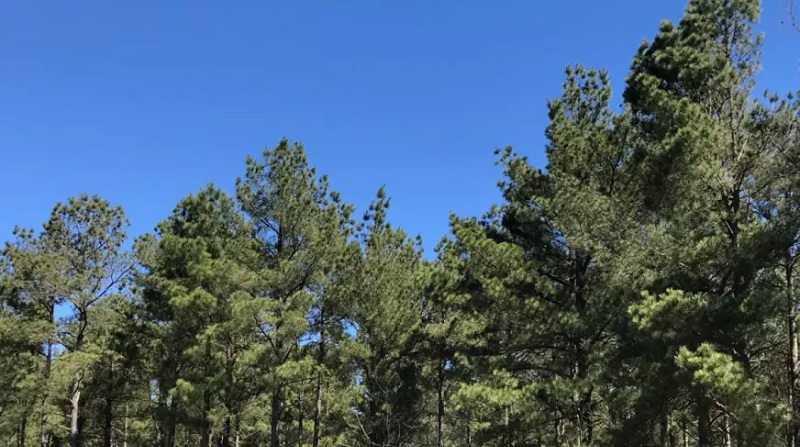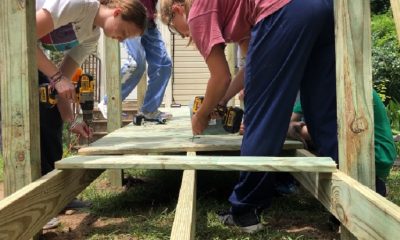Arkansas
Experts are looking into what may be destroying the Arkansas Loblolly pine trees

Little Rock, Arkansas – Something is killing Arkansas’ state tree, the Loblolly pine, and experts are scrambling to find out what it is.
The unknown ailment is most noticeably affecting trees in the southeastern part of the state, where many pine plantations are located. Drew and Ashley County have seen the most occurrences of the strange affliction.
“Loblolly pine is a really good tree to grow. It’s very easily propagated, it’s very easily planted, it grows extremely well on a wide variety of sites, and we really have a very productive forest. This phenomena that we’re seeing right now is unusual because it’s contrary to what we normally see,” said Vic Ford, Associate Vice President of Agriculture and Natural Resources at the University of Arkansas Division of Agriculture.
During the early stages of the sickness, affected trees lack the healthy foliage of healthy ones, and their nettles turn brown and drop off. Although the mortality rate of trees is unclear, some of them do perish.
According to Ford, the cause of stress, such as the Southern Pine Beetle, which gave pine trees a crimson tint, has an impact on how the trees brown. Ford claimed that although the mystery disease manifests itself in a variety of colors, he has seen that the infected trees’ foliage frequently turns grey-brown.
Many in the logging industry are troubled by the ecological conundrum.
“The majority of our forests in the state are owned by private individuals. And so, they’ve invested their livelihoods in creating healthy forests. Anything that impacts those forests from a health perspective is cause for concern,” said Mike Braswell, Executive Director of the Arkansas Forestry Association.
“There have been some, a handful of landowners, that have cleared some of their forests out of concern that the ailment that they were suffering from may continue to spread,” said Michael Blazier, Dean of the College of Forestry, Agriculture and Natural Resources at the University of Arkansas at Monticello.
Blazier sent samples to University of Auburn researchers three weeks ago and said they should have results back by this Thursday, perhaps with some clarification.
A Division Forester with the Arkansas Department of Agriculture named Chandler Barton is one of the people doing the on-the-ground investigation.
“We’re undergoing a sampling effort to identify potential causes. Everything is on the table. We’re looking at pathogens, we’re looking at potential herbicide damages,” Barton said.
“The clues are out there, we just got to figure out what clues are important and how do we put the story together?” said Ford.
“It’s not the Southern Pine Beetle that we had in the ’80s, it’s not the Oak Borer that we had in the 2000’s,” he said. “What it is, is a phenomenon that we’ve noticed. We want to do our due diligence and learn about it. It’s something that we really need to pay attention to, because it could become a problem.”
To organize a course of action moving ahead while they wait for answers, the Arkansas Forestry Association, a trade association for the state’s private wood and forest products industry, met on Tuesday at the Arkansas Department of Agriculture.
There is no reason to panic, according to experts, as the vast majority of the state’s trees are unharmed.
-

 Local News2 days ago
Local News2 days agoFormer publisher of National Enquirer reveals 2018 hush money discussions with Governor Sanders
-

 Local News2 weeks ago
Local News2 weeks agoWheelchair ramp constructed by Ozark Mission Project for elderly woman in need
-

 Local News2 weeks ago
Local News2 weeks agoA four-week closure is planned for North Rodney Parham Road
-

 Local News2 weeks ago
Local News2 weeks agoA cerebral palsy-afflicted Boy Scout creates a special route to become an Eagle Scout
-

 Local News2 weeks ago
Local News2 weeks agoThe Quorum Court of Saline County rejects the Arkansas Abortion Amendment
-

 Local News2 weeks ago
Local News2 weeks agoA mobile clinic for opioid health opens in Malvern
-

 Local News2 weeks ago
Local News2 weeks agoIncome-based scholarship program launched by Reform Alliance
-

 Local News1 week ago
Local News1 week agoOpvee, an additional opioid overdose reversal medication, helps in the fight against the opioid crisis






Leave a Reply